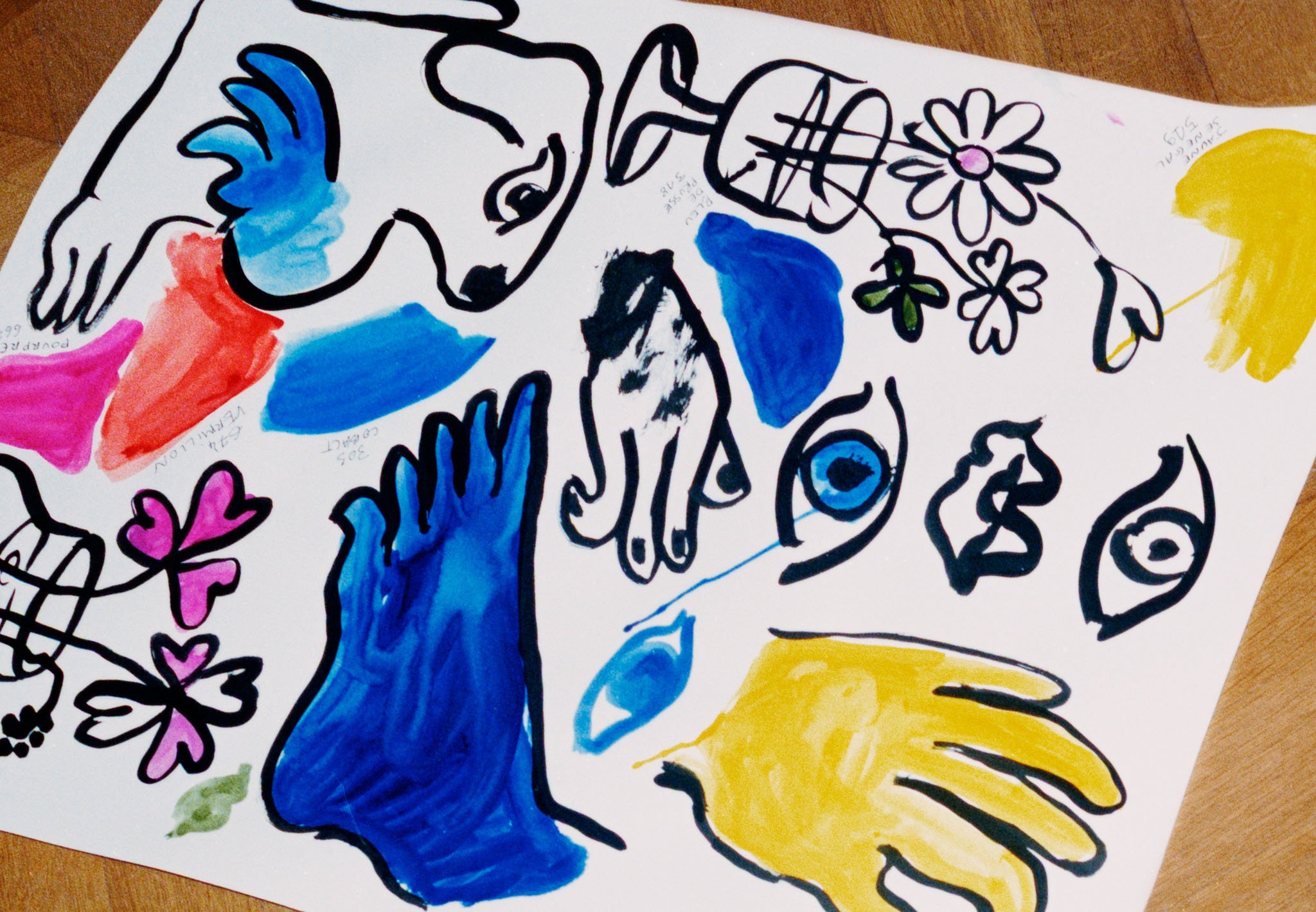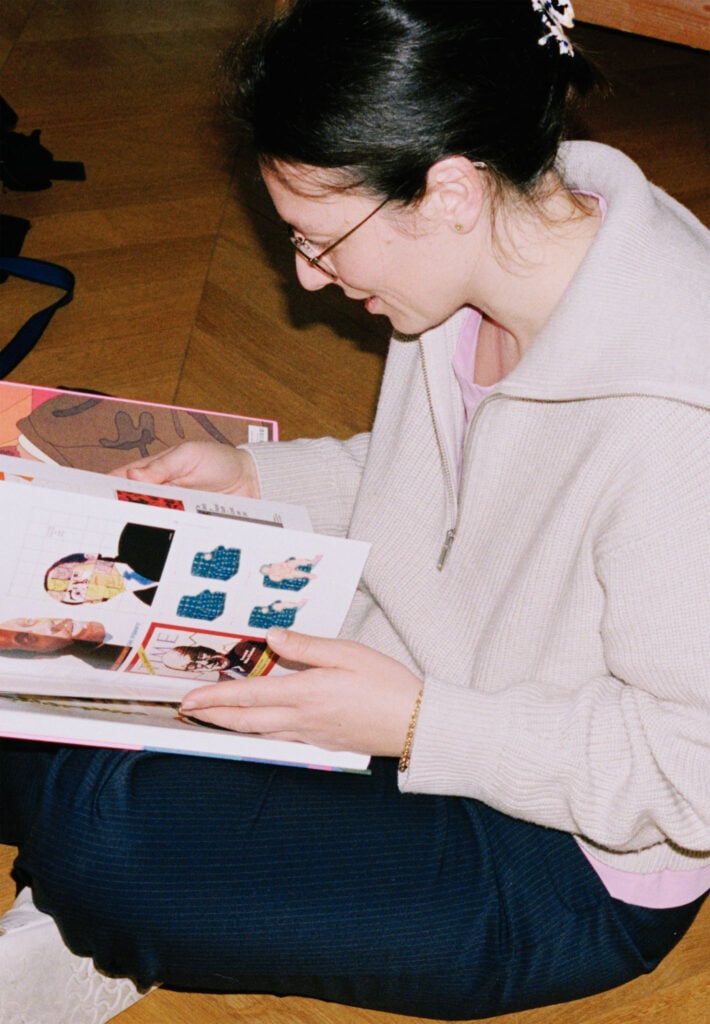Paris: Imagine you have to illustrate a cookbook set in an underground world. A chef—let’s make him a tiny chef, to fit this environment—is as small as an insect. Suddenly, the chef is preparing a sauce, so maybe the chef should be a duck so that he can dip himself into the sauce. Now the duck is a chef is a duck, and the animals that have been comically following him around become vegetables. Vegetables become people, and people become animals. This is more or less how the process unfolds inside Swiss illustrator Olga Prader’s head the moment she gets swept into a drawing—in this instance, one for ‘Duck with Turnip from Apicius’, a recipe by Sally Grainger. Olga is the illustrator of Apartamento Cookbook #8: Tuber, or not Tuber?, the latest instalment in Apartamento’s annual series. She is a graphic designer, art director, and, more recently, an illustrator based between Paris and Ftan, Switzerland. Olga studied graphic design in Lausanne and moved to Paris for love (towards a person, not towards the city). She’s worked with fashion brands such as Balenciaga, Loewe, and Arket, and from 2014 to 2017, she worked at the design studio M/M in Paris. In 2021, her illustration work won the Swiss Design Award. Olga’s process is torrential, a crushing burst of creativity that she follows as she generates variations of an idea, and at every step, she reinvents, reimagines, and invigorates a scene. Her drawings are like a static flip book. They have great dynamism and are made up of playful characters who are not always well-intentioned. Olga’s drawing practice is characterised by sharp social analysis. Her work is tinged with humour and eroticism, full of squealing creatures on the verge of any limits of decorum.
This website uses cookies so that we can provide you with the best user experience possible. Cookie information is stored in your browser and performs functions such as recognising you when you return to our website and helping our team to understand which sections of the website you find most interesting and useful.

































 close
close













